
Virtual remote appointments are available. Contact us for a video telehealth evaluation.

All appointments conducted by our Board Certified doctor and not assistants or non-physician providers.
Why Treat an Enlarged Prostate?
Benign prostatic hyperplasia (BPH) is the medical term to describe an enlarged prostate. An enlarged prostate is very common in men over the age of 50. Not all men with enlarged prostate experience symptoms. But as the prostate grows, it can press on the urethra, causing problems with the flow of urine as you try to urinate.
What is Prostate Artery Embolization (PAE)?
Prostate artery embolization, or PAE, is an outpatient non-surgical procedure that treats enlarged prostates by blocking its blood flow. By doing so, it shrinks the prostate.
This procedure is performed by an interventional radiologist who is a physician that is sub-specialized in image-guided procedures using X-rays, tiny catheters and other micro-tools. This can be performed either through the femoral artery or radial artery as illustrated below.
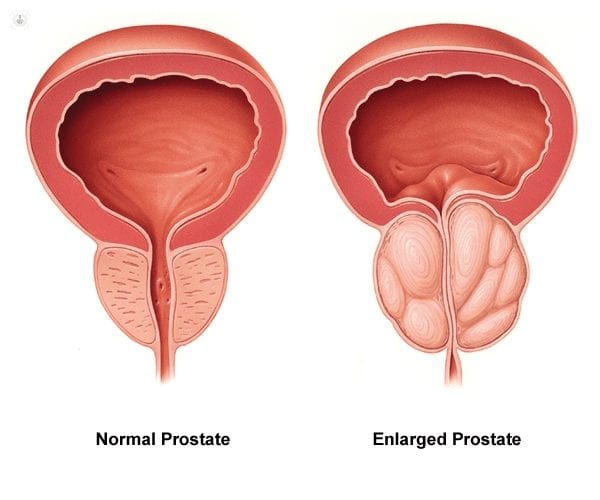
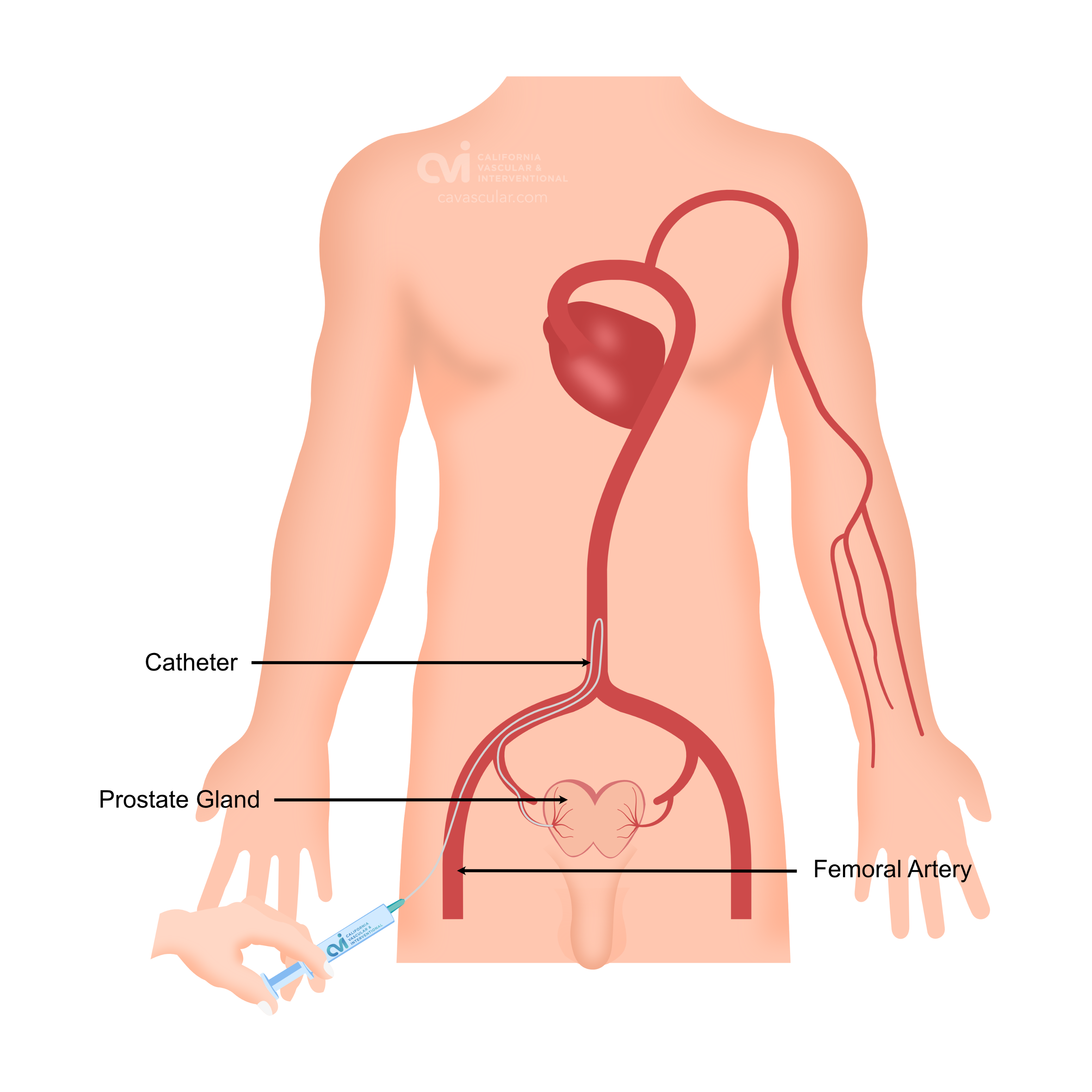
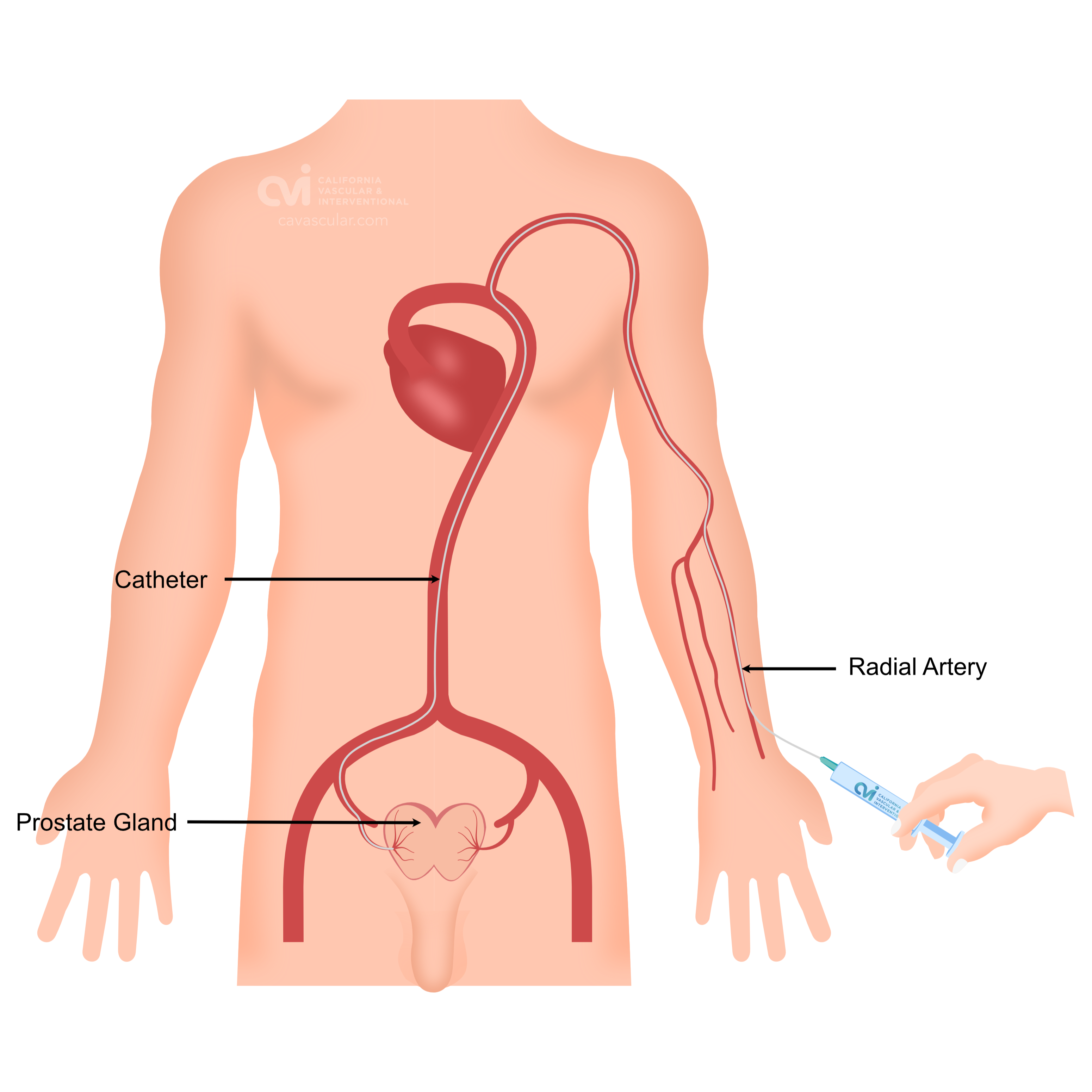
Am I a candidate for Prostate Artery Embolization (PAE)?
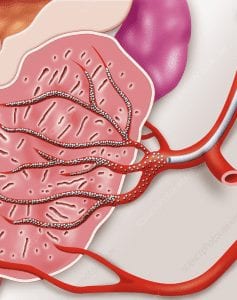
If you experience the following symptoms you maybe a candidate for PAE:
- Problems passing urine, including difficulty starting the urine flow
- A weak stream and dribbling after going to the toilet
- Passing urine more frequently
- Getting up at night to pass urine
- An urgent need to pass urine
- Incontinence and leakage of urine
- The feeling that the bladder is not emptying properly
You will meet with our doctor who will review your imaging, labs and history to determine if you are candidate for PAE and the outcomes you can expect. Our doctor will also be in communication with your urologist to determine if any additional testing is required or if an alternative treatment should be recommended.
What to expect
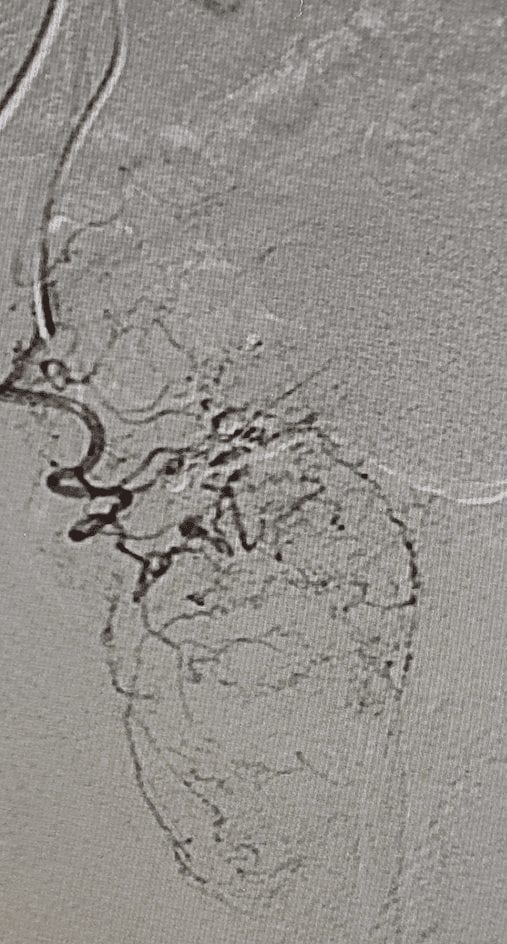
Our highly trained interventional radiologist, who is experienced in advanced embolization techniques, performs this procedure in an outpatient state-of-the-art center, or in some cases the hospital.
Prior to the procedure, the patient is given a local and topical anesthetic to numb the skin and a mild sedative so that the procedure is essentially pain-free. A tiny tube called a catheter is inserted then into an artery at the top of the leg or wrist. A sophisticated X-ray machine that creates moving pictures in “real” time enables the doctor to see the catheter as it is guided through the blood vessels and into the prostate artery.
The final step in prostate embolization is the injection of tiny particles the size of sand particles through the catheter. The particles lodge in the blood vessels feeding the prostate and cut off the blood supply causing the prostate to shrink in size.
Advantage of PAE over Surgery
- Less risk of sexual side effects, such as retrograde ejaculation
- Lower risk of incontinence
- Less likely to require urinary catheterization
- Less downtime with fast recovery
- Minimally invasive without large incisions
- Safe and effective alternative to surgery
- More than 3 out of 4 men avoid TURP surgery
- Can serve as a bridge between medical therapy and surgery
Surgical options such as TURP and open prostatectomy have higher reported rates of retrograde ejaculation (ejaculation into the bladder rather than out through the urethra), impotence, and urinary incontinence.
Appointments are available via an online video telehealth platform or in person at one of the offices in Los Angeles, Orange County or San Diego, depending on the doctor’s availability. Contact Us Today. Why should you choose us? Read here.
Results
Over 70% of men will gain symptomatic improvement after PAE with reduction in prostate volumes and an increase in urinary flow rates, without sexual dysfunction.
20% of patients have reported to have experienced improvement without the occurrence of any change in prostate size. PAE is a safe procedure, designed to improve your medical condition and save you having a larger operation.
